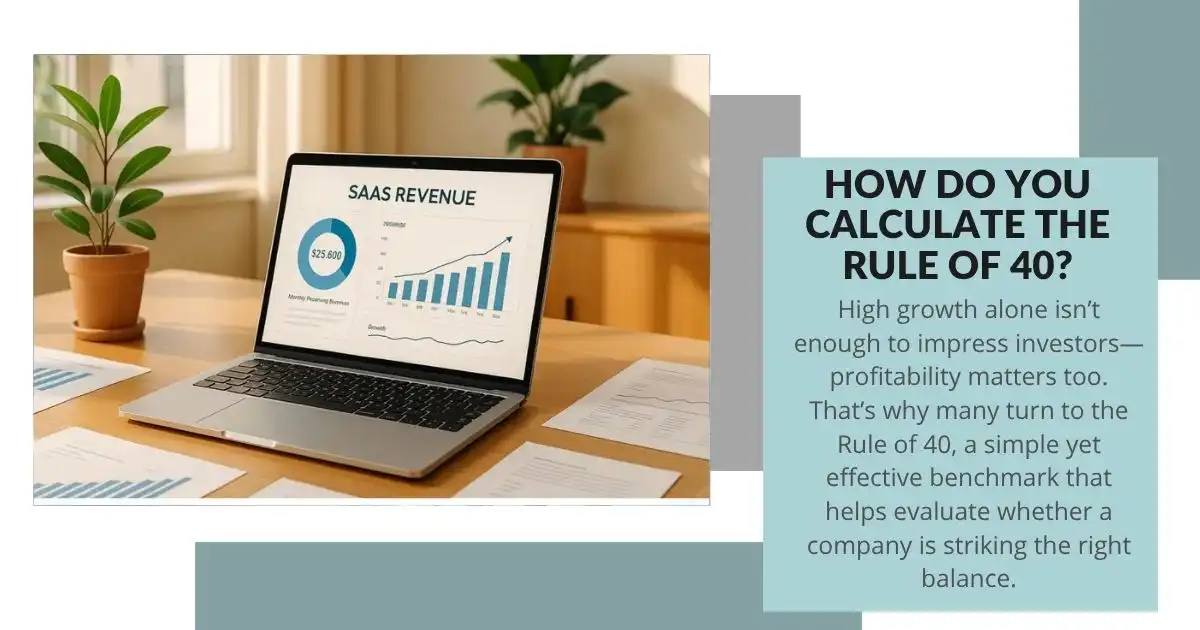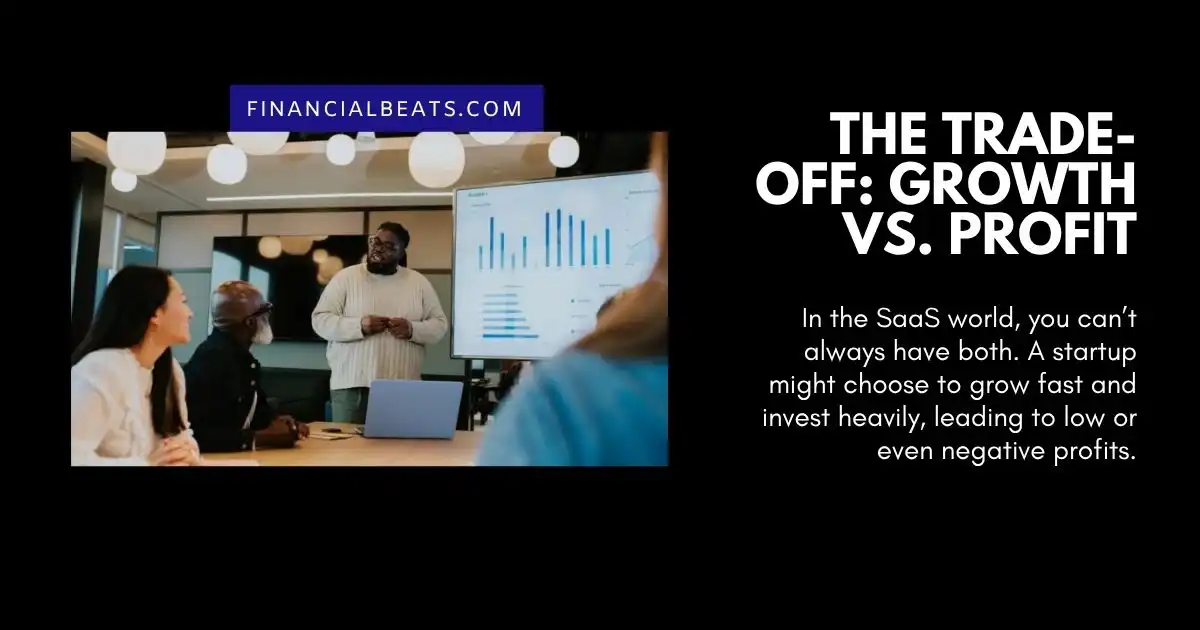When it comes to measuring the success of a SaaS company, the Rule of 40 is one of the sharpest tools in the toolbox. It’s simple, smart, and trusted by investors, founders, and CFOs alike. Why? Because it provides a quick snapshot of how well a company is striking a balance between growth and profitability, two of the most significant drivers of long-term value.
Think of it like a financial seesaw. A company growing super fast might not be making a profit yet, while a profitable one might be growing slowly. The Rule of 40 helps answer: Is the trade-off worth it?
But what is it, and why has it become a gold standard in the SaaS world?
What Is the Rule of 40?
The Rule of 40 is a widely used financial benchmark in the SaaS (Software as a Service) industry. It helps companies and investors measure the balance between a company’s growth and profitability, two critical indicators of long-term success.
A SaaS company is considered financially healthy if the sum of its revenue growth rate and profit margin equals or exceeds 40%.
Here are the five key purposes of the Rule of 40:
- Evaluating business performance by combining growth and profitability metrics.
Helping investors quickly assess the financial health of a SaaS company. - Encouraging balanced decision-making between aggressive growth and sustainable profits.
It rewards companies that either grow rapidly, generate strong profits, or ideally, both. - Setting benchmarks for SaaS company leaders to aim for during planning and budgeting.
- Highlighting trade-offs in financial strategy for founders, CFOs, and stakeholders.
It helps explain whether sacrificing profits for growth (or vice versa) is justified.
Why Is the Rule of 40 So Important?

The Rule of 40 has become a trusted tool in the SaaS industry because it offers more than just a number—it provides meaningful insight into a company’s financial balance.
If you’re an investor, founder, or CFO, this metric helps cut through complexity and highlights what truly matters for long-term success. Here’s why it’s so powerful.
Here’s what makes it so powerful:
- It shows balance – A fast-growing company might not be profitable yet, and a profitable company might be growing slowly. The Rule of 40 keeps both in check.
- It’s easy to use – Investors don’t need complex formulas to get a quick sense of a company’s financial health.
- It helps guide smart decision-making – Should the company spend more to grow or pull back and protect profits? This rule helps answer that.
- It’s widely used – Many top SaaS companies, VCs, and CFOs use it as a standard benchmark.
- It supports long-term thinking – Sustainable growth, not just fast growth, is important to surviving in the competitive SaaS space.
How Do You Calculate the Rule of 40?

High growth alone isn’t enough to impress investors—profitability matters too. That’s why many turn to the Rule of 40, a simple yet effective benchmark that helps evaluate whether a company is striking the right balance. It combines growth and profit into a single metric, making it easier to assess overall financial performance at a glance.
The Rule of 40 is a straightforward method for evaluating a company’s financial health. You just add the Revenue Growth Rate (how fast the company’s income is growing) to the Profit Margin (how much profit remains after expenses). The formula is: Revenue Growth (%) + Profit Margin (%) = Rule of 40 Score.
For example, if a SaaS company grows 30% and has a 15% profit margin, the score is 45%, above 40%, which is considered strong. However, if a company grows 25% but has a -10% profit margin, the score drops to 15%, well below the benchmark and potentially a red flag for investors.
The Trade-Off: Growth vs. Profit

In the SaaS world, you can’t always have both. A startup might choose to grow fast and invest heavily, leading to low or even negative profits. Meanwhile, mature SaaS companies might shift focus to becoming profitable, even if growth slows down.
The Rule of 40 doesn’t punish either approach. Instead, it says:
“It’s okay to lose money, as long as you’re growing fast. It’s okay to grow slowly if you’re highly profitable. But if you’re not doing either, it’s time to rethink the strategy.”
Rule of 40 and SaaS Company Value

In valuing SaaS companies, investors often use the Rule of 40 as a quick yet powerful benchmark. It helps assess whether a company is growing sustainably and efficiently managing its resources.
Important Points:
- A Rule of 40 score above 40% signals strong financial performance and balance.
- Investors and analysts use it to guide funding, acquisition, and growth decisions.
- High scores often lead to better valuations and increased investor confidence.
- It reflects a company’s scalability and operational efficiency.
The metric is especially useful when comparing SaaS companies at different growth stages.
The True Value of Balance
In the high-stakes world of SaaS, growth is essential—but not at any cost. Like seasoned CFOs steering companies through economic uncertainty, the Rule of 40 guides SaaS leaders through critical trade-offs. It’s more than a formula—it’s a litmus test for financial discipline and strategic foresight.
Are you scaling too quickly and burning cash? Playing it too safe and stalling growth? Or hitting the sweet spot where momentum meets sustainability? In a landscape where priorities shift overnight, the Rule of 40 remains a steady compass.
But as pressure mounts to deliver both profit and performance, one question stands: Can SaaS companies truly achieve balance—or is it just another metric chasing perfection?
FAQs
What is the importance of SaaS growth and profitability?
SaaS growth and profitability are key indicators of long-term success, showing whether a company can scale while maintaining financial health.
How does the Rule of 40 help with financial trade-offs in SaaS?
It guides decisions by balancing revenue growth and profit margin, helping leaders choose between aggressive expansion and sustainable profit.
Why is the Rule of 40 important in SaaS valuation?
Investors use it to quickly assess a company’s financial strength and scalability, often linking high Rule of 40 scores with better valuations.
What SaaS growth metrics matter most to investors?
Metrics like revenue growth rate and profit margin help investors evaluate how efficiently a SaaS company is growing and managing resources.
